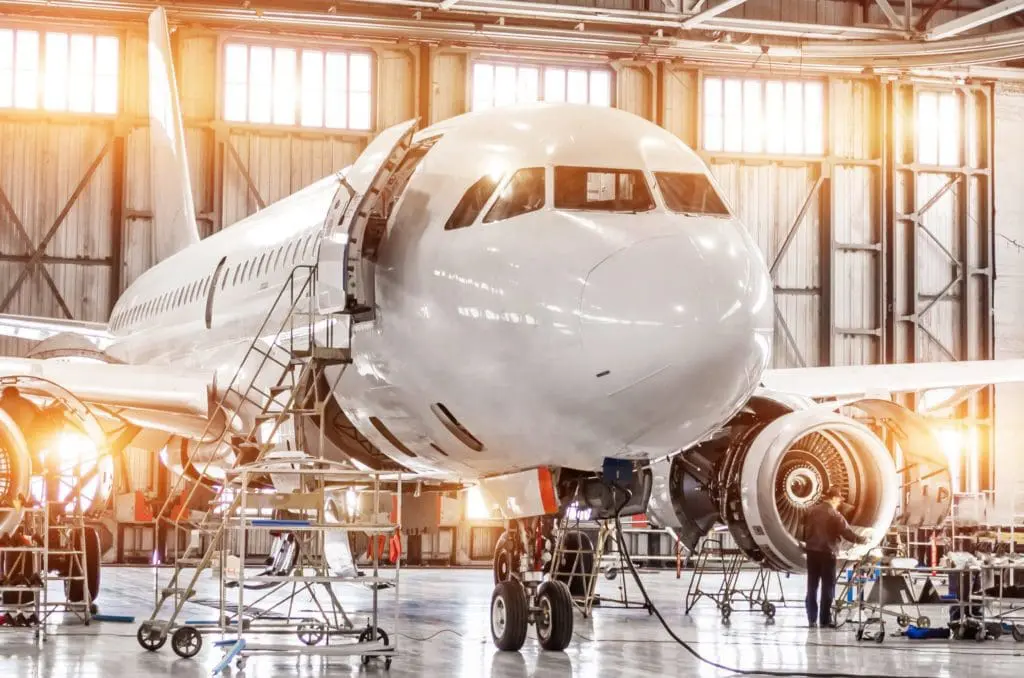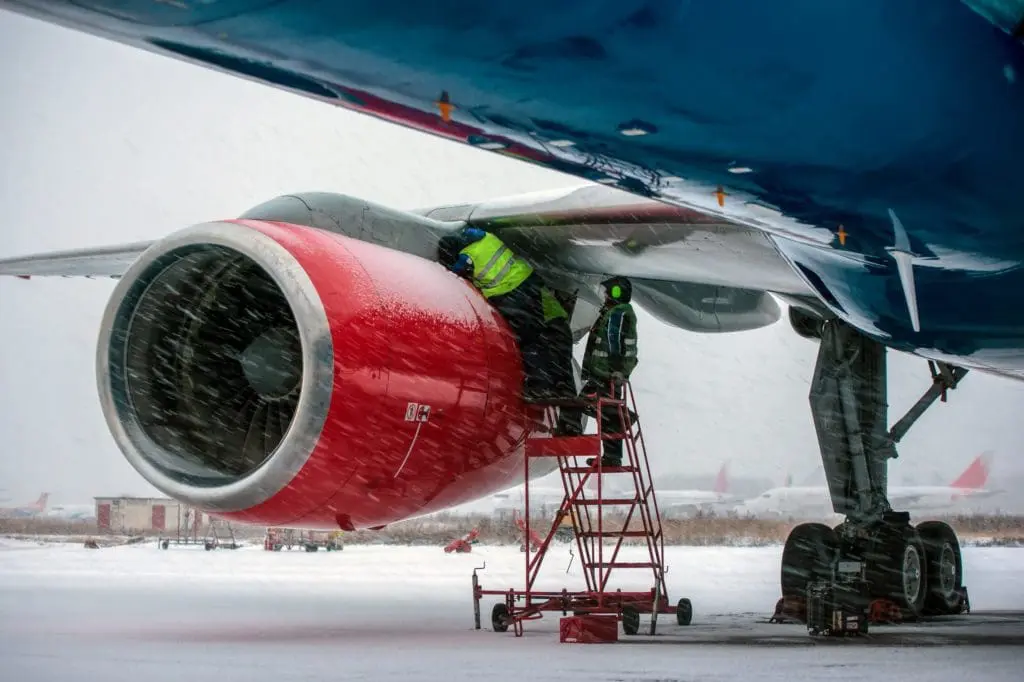Think about the tremendous and constant stress on an aircraft in flight. Aircraft repair must be a careful and reliable endeavor to ensure passengers and crew safety, as well as meeting the highest safety compliance standards in the world.
Choosing a strategy for aircraft repair requires diligence and near-ridiculous attention to detail for your planes to continue performing like champs. Trusting cold spray technology in your aircraft metal repair is a smart choice.
Below, we’ve outlined several common aircraft metal repair challenges, and how cold-spray technology can help you professionally and safely manage your aircraft maintenance.
VRC Metal Systems stand the test of rigor and safety again and again. Contact us today to discover and utilize our leading-edge cold spray technology aircraft repair solutions.
Results of poor aircraft repair strategy

It goes without saying that less-than-perfect aircraft repair can cost lives and livelihoods. The stakes are extra high when keeping flying machines in top-notch condition.
Not only must the initial airplane design be spot-on to guarantee safe, comfortable, and efficient flights day after day, but any repair material should be compatible with the substrate for the varied loading, temperatures, and environments aircraft experience, without adding any significant extra weight or risk of failure.
A repaired joint affects another area of the aircraft. A too-weak joint won’t hold the load for which it was designed, and a too-stiff joint may stress and weaken other parts and pieces of the aircraft over time.
Further, welding or high-temp thermal sprays present a tricky repair methodology for aluminum alloys in aircraft. The high heat and quick cooling of the welding process can disrupt the atomic copper-and-aluminum structure of conventional aircraft aluminum alloys, leading to compromised strength.
Cold spray technology can bond particles to metal without adverse heat effects, as well as reducing the need for riveted doubler repairs.
Cold Spray and FAA Approval

There are two types of aircraft repair relevant to cold spray technology: structural and non-structural. Cold spray repairs are currently FAA-compliant for after-market non-structural aircraft components and even some structural repair opportunities for the secondary structure have been identified.
For this discussion, structural repairs comprise maintenance to the load-bearing portions of the airplane, like the wings, fuselage, and other components as either primary or secondary structures. Nonstructural repair refers to parts contained within the plane not necessary to maintain and sustain flight.
Some types of damage to engine parts, landing gear components, and other essential and non-essential parts required for safe and reliable operation can still fit under “nonstructural” aircraft components. This depends on the location and extent of the damage.

Currently, cold spray technology presents cost-saving solutions and increases the lifespan of numerous non-structural parts. For a damaged APU gear-box, here is an example repair schematic for a cold spray repair process:
- Assess the gearbox damage
- Machine damaged segments to create a smooth surface
- Clean and mask damaged surface
- Apply cold spray
- Machine repaired surface to desired finish
- Apply final required surface finishes (i.e. repaint, anodize, etc.)
Compared with the 9-step process of conventional welding and high-temp thermal spray repair, cold spray technology presents a speedier and safer way to repair aircraft components.
Cold spray repair systems bypass the need for stud and liner removal, distortion adjustment, stud, and liner installation, and heat treatment in welding.
The current state of cold spray aircraft repairs
Currently, cold spray technology in aircraft repair has several useful applications with basic, low-pressure systems. For example, valve, pump, and engine components have benefited from cold spray repairs since 2009.
Cold spray can increase the amount of time between successive repairs and is used to maintain tight bore tolerances of .0005 inches at critical dimension repairs.
The future of cold spray technology and structural aircraft repair
Aircraft repair companies can look forward to a time when the FAA approves the use of cold spray for even structural aircraft repair. The advantages to structural repair with cold spray include:
- Fewer steps from damage assessment to repair completion
- Elimination of alloy damage from welding or thermal spray repairs
- Increase the lifespan of aluminum parts
- Reduce costs associated with part replacement over part repair
- Repairs can often proceed “in-situ;” without removing a part from a plane or a component from its shipping box, saving significant man-hours in labor costs

The pathway to FAA approval includes a bevy of precise testing and implementation steps. Here’s how the process works:
- Target the aircraft components best suited to cold spray repairs, such as aluminum and magnesium alloy gearboxes.
- Decide which part locations lend themselves best to cold spray repairs, like broken bolt holes, undersized flange thicknesses, or damage and light cracks where welding and thermal sprays would compromise structural integrity.
- Ensure cold spray deposits align with the substrate material mechanical properties
- Use a high-pressure application process over basic low-pressure methods to meet required mechanical properties.
- Test the application on scrapped components, evaluating spray angles, pressure changes, and repair strength
- Report successes and failures
- Refine the cold spray application process until cold spray deposits exceed the tensile strength requirements in that area of the substrate material
- Repeat testing for glueless bond and threaded hole applications for strength and pull 9. Continue to refine and repeat testing success to demonstrate functional life and reliability of repairs under enviro-mechanical loading.
Aircraft repair Cold spray technology has enjoyed massive success in non-structural aircraft repair. Experience has shown that cold spray can significantly cut costs and downtime for a variety of aircraft components.
Gaining FAA approval for structural repairs with cold spray can revolutionize the aircraft repair industry by streamlining the repair process, lengthening part life, and meeting the highest safety standards of any industry.
Cold spray technology in aircraft repair is an evolving, exciting, and innovative solution that can help large airlines and flight hobbyists alike improve and increase the life of their machines.
Partner with VRC Metal Systems whether you own an aircraft or need a repair on your production line, VRC Metal Systems has the cold spray technology to fit nearly any application. Our systems help you gain more life from your machines quickly, efficiently, and professionally.
We work with you to customize your application with our superior knowledge and experience. We provide leading-edge equipment that helps you protect, repair, or restore what makes your business run.
We adapt to a wide variety of applications and strategize the best cold-spray solutions for your needs. Contact us today to find out how cold spray can revolutionize your operation.

